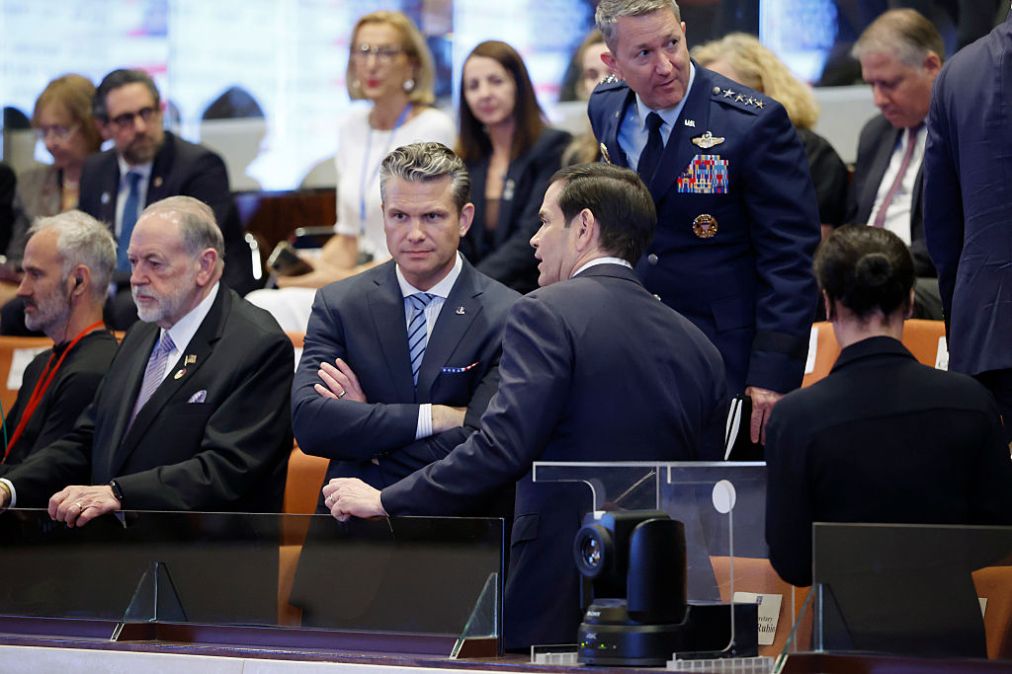Hegseth’s acquisition overhaul seeks to spur major shifts for foreign military sales

Defense Secretary Pete Hegseth unveiled broad plans on Friday to shake up the Pentagon’s approach to Foreign Military Sales, marking a cornerstone in the Trump administration’s disruptive new effort to reform the U.S. military’s processes for supplying technology and weapons systems to international buyers.
“Transforming requirements and acquisition alone is not enough. We must also improve the way our department and the industrial base supports weapon sales to our allies and our partners. This is a top priority for my team, in partnership with [Secretary of State Marco Rubio] and [Commerce Secretary Howard Lutnick],” Hegseth said. “President [Donald] Trump is securing deal after deal to bring cold, hard cash to American manufacturers — but our processes are too slow and our industrial base is too inefficient to keep up and deliver on time to our allies and partners.”
During a speech to an audience of industry professionals, Defense Department personnel and other stakeholders at National War College on Friday, Hegseth announced a slew of forthcoming changes that his team is rapidly pursuing to revamp the U.S. government’s frameworks and practices for defense acquisition and arms transfers.
The Pentagon released a new enterprise procurement strategy and three associated memorandums to guide this shift to reporters and attendees, shortly after Hegseth’s event.
In the aftermath of Russia’s 2022 invasion of Ukraine and separate conflicts in the Middle East that emerged after Iran-backed Hamas attacked Israel in 2023, nations’ interests in buying weapons from America has expanded substantially over the course of recent years.
And in 2025, Trump has also prioritized FMS deals — and reform — as part of his second term’s “America First” policy agenda.
It’s no secret that bureaucratic and modernization challenges across the federal government are increasingly plaguing such procurement processes, including lengthy requirements leading to delivery delays, complexities that result in a lack of oversight and transparency, and other issues that can impact U.S. competitiveness.
“We can and must do better. We’re taking decisive action to resolve it. We’ve worked to bake exportability into the acquisition lifecycle from the very beginning, and we’re investing heavily in making that a reality. We’re modernizing our IT systems and establishing clear performance metrics to track progress and identify bottlenecks at the operational level,” Hegseth noted. “Some of our combatant commands, I’ve seen firsthand, have similarly begun moving out to remove FMS process inefficiencies at the tip of the spear in theater — but the next step is a crucial one.”
He announced a “realignment” of the operational control of the Defense Security Cooperation Agency (DSCA) and the Defense Technology Security Administration (DTSA) from the Pentagon’s policy directorate, to the acquisition and sustainment directorate.
While the DSCA helps deliver defense items, services, and training to allies and partner nations, the DTSA administers the department’s technology security policies and reviews export licenses for dual-use items.
Hegseth said this switch in reporting and organizational structure is necessary because “success demands a unified approach across the entire acquisition lifecycle — from the first dollars invested in research and development, all the way through maintenance and delivery of spare parts.”
“Starting today, we will now manage our defense sales enterprise with a single integrated vision, from initial planning to contract execution to delivery,” he told the audience.
In the official memo on this initiative published after his speech on Friday, Hegseth directed the Pentagon’s undersecretaries for policy and A&S to produce a draft implementation plan for his approval within 60 days.
His mandates follow and build on an executive order Trump issued in April, titled “Reforming Foreign Defense Sales to Improve Speed and Accountability.”
“This is just the beginning of transforming our approach to defense sales,” Hegseth said. “There’s much more to come in the months ahead — because this is about more than selling weapons. It’s about building partnerships, strengthening our industrial base and ensuring that American-made military equipment remains the gold standard for defense around the world.”






